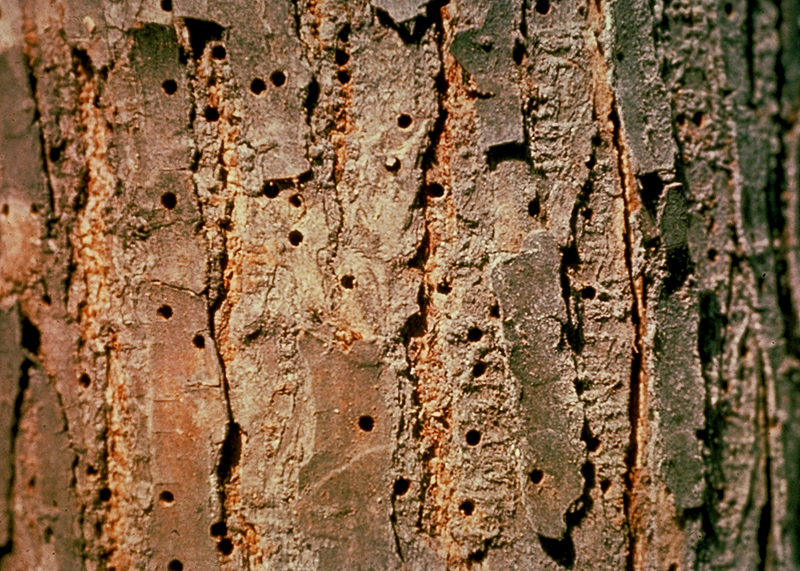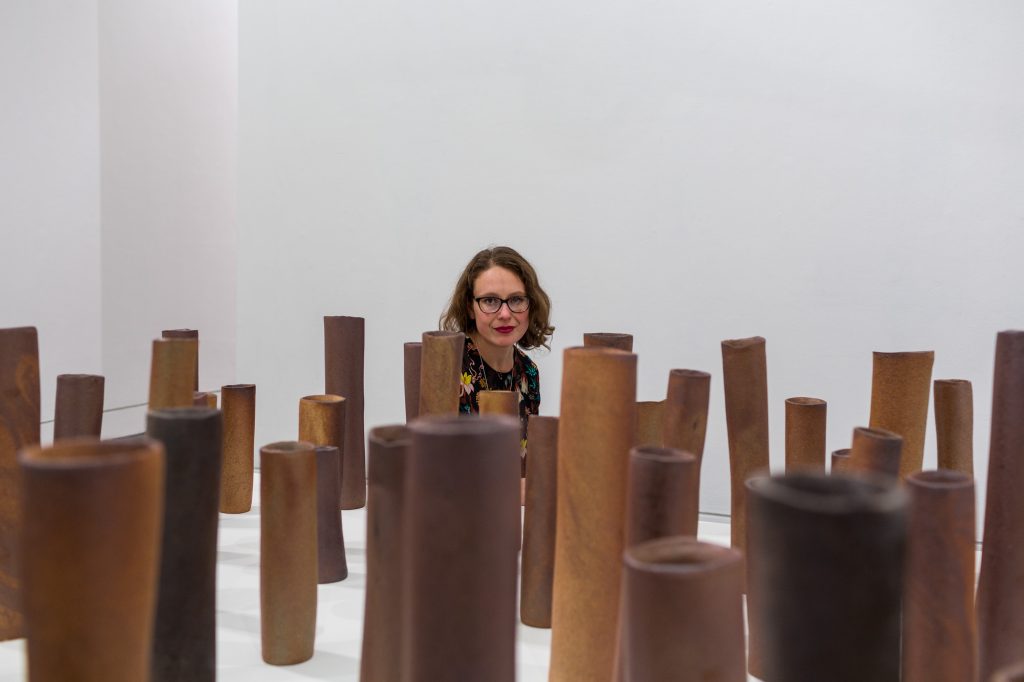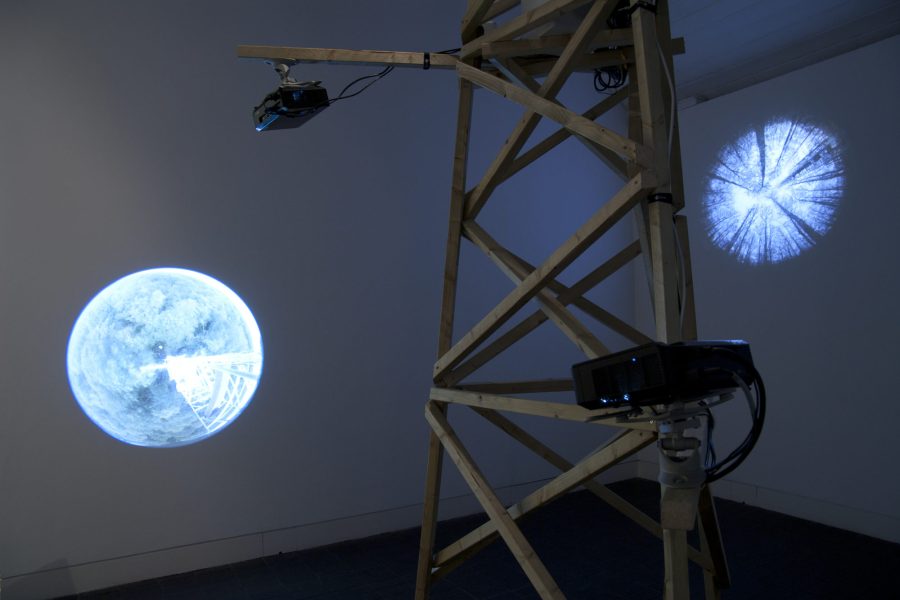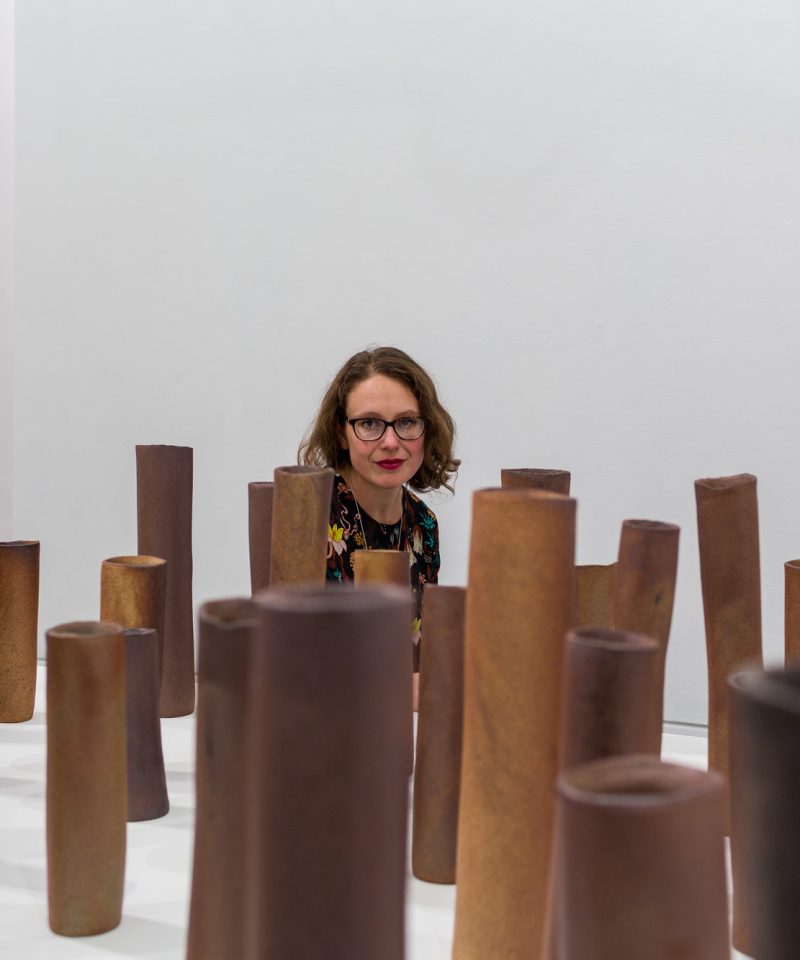This is an essay written in response to Rebecca Beinart’s proposal for Jerwood Open Forest 2016. Beinart’s performance, ‘The Forest of Lost Trees’, affords a narrative to trees that have been lost over the course of history. Her performance, and accompanying work in the Jerwood Open Forest exhibition, examine the links between our environment and our experiences, and how personal narratives are passed on and imbued in things external to us.
‘When I was younger and, more importantly, my grandparents were younger, they lived in a house with an apple orchard attached. It was overgrown and probably dangerous. As a child, I ran around the orchard and collected apples — often rotten or deformed. I don’t remember much else. But I remember the scale of the orchard, constant autumnal colours, irrespective of season, faded and distinctly aged. There was a low, irregular stone wall which backed right on to a main road. The road was busy and loud — I know this now, but I do not remember it as then.
My grandparents, when they got older moved to a bungalow. Then they died and, of course, lived nowhere at all. Now, the apple orchard is fully functioning. The owners make hand-pressed apple juice and sell it at local shops and markets. It is a rural idyll. But, I prefer to think of it as defunct, respectfully uncared for, producing fruit which bounced and bruised. Apples which were sniffed at by dogs and put in the mouths of children. The current order and cleanliness of the place, which I have both seen and imagined, disrupts any remembered unruliness. It is childish to be unclean and engage with natural uncleanliness.
My nostalgia is in response to a re-structuring: to capitalise fully on the potential generation of trees, harnessing the natural, of facilitating its autonomy. It is the opposite of desolation, but it interferes with my associations of place, family, of the liveliness of my grandparents, before noticing its steady decline. I prefer the apples to bruise, to break apart powder-ily, be fed to dogs or pigs, or children. Or taken out of the hands of children in haste.’
Nostalgia: Disease
Nostalgia used to be a disease. It followed the pathology of a disease: spreading from country to country, eliciting outbreaks, examination, the search for a locus, the research for cures. In 1905 nostalgia was defined in The New International Encyclopaedia, as ‘a feeling of melancholy caused by grief on account of absence from one’s country, of which the English equivalent is homesickness. Nostalgia represents a combination of psychic disturbances and must be regarded as a disease. It can lead to melancholia and even death.’ Many doctors believed that, despite no clear cause or ‘pathological bone’, if left untreated nostalgia could destroy the internal organs.
The first diagnosed victims of nostalgia were various displaced people of the 17th century. The indigenous peoples of the earth who have been disposed of their lands and its cultural heritage are likely to suffer from nostalgia, as disease; research has found that they experience physical and mental illness at rates far higher than those of other societal groups. Those who are dispossessed or displaced, either by force, or disaster, are likely to experience the serious distress and pain of nostalgia.
Historically, nostalgia was also particularly evident in soldiers fighting in foreign countries; if afflicted they became ill and unable to perform their duties. The ‘cure’ for the disease varied, either utilising reassurance or its oppositional force. Most suffering soldiers were told to return home to recuperate and restore their health; often the mere suggestion of returning home alleviated their symptoms. Conversely, some employed terror tactics to counter nostalgia. In 1733, one Russian general instigated a rule whereby any of his troops citing the disease would be buried alive. In some cases, the soldiers were buried up to three times. Cases declined significantly. Or, at least, their pronouncement did.
As late as 1946 nostalgia was termed a possibly fatal ‘psycho-physiological’ complaint by eminent social scientists. However, in the twentieth century, optimistic belief in the future, in a Hegelian trajectory of rational, linear progress, became outmoded. Instead, belief in utopia was replaced with a longing for the past. Nostalgia gradually became colloquialised, breaking away from its medical status. No longer associated with severe illness, it became romanticised. In general, contemporary use, nostalgia is a preference for the past over the present, for a previous setting or environment in which the sufferer felt more ‘at home’ than the present; it loses its intense connection to the geographical home, instead eliciting comfort from a period — sometimes metaphorical — in the past.
Nostalgia is a sentimentalised version of personal history; it is fundamentally concerned with our connection to ourselves. It desires to obliterate history and turn it into a private or collective mythology. Although it may refer back to a specific place, time or period, it is independent of time. It seeks to crystallise a sensation or experience, apart from its predecessors or ancestors.
In the twenty-first century, nostalgia has become a conscious, participatory action. We can deliberately build ‘nostalgic’ memories by behaving differently. Scientists term this as ‘anticipatory nostalgia’ — if you do something unusual, with benevolent intent, you are more likely to remember it and reminisce. In the same way that human behaviour has become increasingly self-aware in our knowledge of constant documentation — photography, social media, film, television — our connection to nostalgia has become similarly self-conscious. We use nostalgia to assuage our ‘sense of meaning’; in purposefully devising ‘nostalgic memories’ we create a restricted version of our own history, confident in the beauty and belonging of what has happened and happened well.

Dutch Elm Disease
Disease is uncompromising. We associate it with ourselves because in our understanding of physical order, there is a complicit understanding of dis-order, of dis-ease. Whereas, the disease of a landscape is often missed in its inevitable, symptomatic absence. Most people under the age of 40, including myself, will not have seen an expanse of English landscape, which has not suffered, or is not suffering, from disease.
In 1967, a shipment of elm arrived in the UK from North America. It contained a virulent strain of Dutch elm disease, which subsequently killed more than 25 million trees in the UK. Gradually migrating to Scotland, it reached Inverness in 2006. The disease was first reported in North America in 1931, when a furniture company in Cleveland bought a shipment of infected logs from France. Over the next few decades, elm trees died by the hundreds of thousands in the US. The disease reached Canada during the Second World War, spreading to Ontario in 1967, Manitoba in 1975, Sakatchewan in 1981. Toronto lost 80% of their elm trees.
The disease is caused by a fungus, carried by the elm bark beetle. As the beetles feed on the twigs, they bite through the bark and release spores which travel down the tree and water vessels, causing a reaction which kills the tree. The British elm is particularly susceptible, and the disease cannot be eradicated once a tree is infected. Since 1990, Britain has retained very few mature elm trees. The taller they grow, the more susceptible they are to the disease. Now, elms are regularly found in hedgerows, kept under four metres. They remain healthy if their growth is stunted, forced to evade maturity.
Most of us think of trees as autonomous and archaic, maybe even immortal. Some forests are young. There is no woodland in Britain that has not been, at some point, maintained or affected by human intervention. Natural wildlife is its own biggest disease threat. As the fungi are spread by the elm bark beetle, the adult female beetle bores through the bark, creating a tunnel. She lays eggs in the tunnel, which hatch into larvae and in turn begin to feed, creating a further system of tunnels, until the elm tree is a series of static holes, housing the movement of its parasite.

Solastalgia: Disease
There are not many words which closely connect psychological and environmental states. One is ‘desolation’ — its meanings refer both to a great unhappiness or loneliness, and to a landscape which has suffered complete devastation. Australian environmental philosopher Glenn Albrecht, is concerned with the relation between these two, seemingly independent, states — the connections between environment and illness. Albrecht adapts the word ‘solace’, which also relates to both psychological and physical contexts. One meaning refers to the comfort a person can be given in difficult times (consolation), while another refers to that (person, landscape, place, song etc.) which may provide comfort. If a person seeks comfort in a particular landscape or place and it is being desolated, they will suffer distress. Albrecht, expanding on nostalgia’s original connection to place or ‘home’ (nóstos = homecoming) conflates this idea with pain (algia) derived from the uncontrollable loss of solace caused by the transformation of a person’s environment, coining the term ‘solastalgia’.[1]
Solastalgia exists when there is recognition that a place of residence, or a place of significance, is under assault. Whereas nostalgia is a temporal dislocation, something that refers back, mythologises a past experience, and is, in some way, in its contemporary understanding, protective, solastalgia is the lived experience of loss. It does not translate experience into a personal history to endure, miss or romanticise. Solastalgia is dependent upon current, directly experienced, destruction, that undermines the potential for solace: ‘In brief, solastalgia is a form of homesickness one experiences when one is still at “home”.’[2]
The factors that cause solastalgia can be both natural and artificial. Natural disasters, such as tsunamis, hurricanes, drought, fires, floods, earthquakes, can cause solastalgia. Human-induced change such as war, terrorism, mining or even the progress of building works, and new developments, can give rise to solastalgia. The spread of disease — such as dutch elm disease — which directly alters the landscape, uncontrollable and destructive, can also cause the phenomenon.
Disease attacks our understanding of eternal nature. For some, solace is derived from a landscape in place of a person, because it appears immune to illness or the physical frailty innate in the human body. To witness a desolation which both undermines this belief and results in the loss of unique, personal solace, can result in distress, often manifest in physical and mental illness. It can be felt by a community or an individual. It can lead to the proactive action of clearing, re-planting, maintaining, treating and, in some cases, paradoxically, felling of trees.
While nostalgia allows a re-framing of experience, solastalgia does not. It is a distress caused by the overpowering, autonomy of our surroundings. Nostalgia is the pain derived from our desire to re-connect with ourselves. Solastalgia is the pain derived from a desire to connect, or re-connect, with something other than ourselves. If the trees are ill, so are we.
‘In recent years, more and more of her problems were rooted in the deterioration of the tree itself. She has been on disability, a back injury forcing her out of the medical field, and as house maintenance and yard work started to fall by the wayside, the tree’s health went unnoticed.’
‘We really haven’t been sleeping that well [after the limbs fell]’
[1] Albrecht, Glenn, www.psychoterratica.com
[2] Albrecht, Glenn, www.psychoterratica.com




